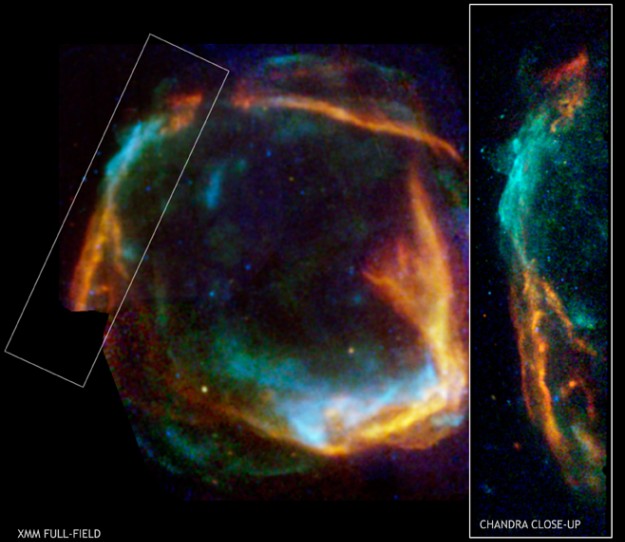APOD: 2006 September 28- RCW 86: Historical Supernova Remnant

Explanation:
In 185 AD,
Chinese
astronomers recorded the appearance of
a new star in the Nanmen asterism -
a part of the sky identified
with Alpha and Beta Centauri on modern star charts.
The
new star was visible for months and is
thought to be the earliest
recorded supernova.
Data from two orbiting X-ray telescopes of the 21st
century,
XMM-Newton and
Chandra,
now offer
evidence that supernova remnant RCW 86
is indeed the debris from that
stellar explosion.
Their composite, false-color
view
of RCW 86 shows the expanding shell
of material glowing
in x-rays
with high, medium, and low energies shown in blue, green, and red hues.
Shock velocities
measured in
the x-ray emitting shell and an
estimated radius of about 50 light-years can be
used to find the apparent age of the remnant.
The results indicate that light from the initial explosion
could well have first reached planet Earth in 185 AD.
Near the plane of our
Milky Way Galaxy,
RCW 86 is about 8,200 light-years away.
Authors & editors:
Robert Nemiroff
(MTU) &
Jerry Bonnell
(USRA)
NASA Web Site Statements, Warnings,
and Disclaimers
NASA Official: Jay Norris.
Specific
rights apply.
A service of:
LHEA at
NASA /
GSFC
& Michigan Tech. U.

